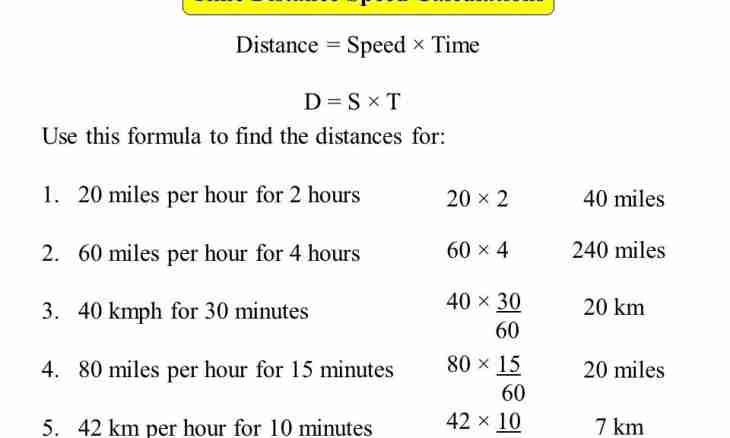Speed of a body is characterized by the direction and the module. In other words, the module of speed is a number which shows, how fast the body moves in space. Movement assumes change of coordinates.
Instruction
1. Introduce the system of coordinates concerning which you will define the direction and the module of speed. If in a task the formula of dependence of speed from time is already set, it is not necessary to introduce the system of coordinates – it is supposed that it already is.
2. On the available function of dependence of speed from time it is possible to find value of speed of t at any moment. Let, for example, v=2t²+5t-3. If it is required to find the speed module in timepoint of t=1, just substitute this value in the equation and count v: v=2+5-3=4.
3. When the task demands to find speed in initial timepoint, substitute in t=0 function. In the same way it is possible to find time, having substituted the known speed. So, at the end of the way the body stopped, that is, its speed became equal to zero. Then 2t²+5t-3=0. From here t=[-5± √ (25+24)]/4=[-5±7]/4. It turns out, something t=-3, or t=1/2 and as time cannot be negative, there is only t=1/2.
4. Sometimes in tasks the equation of speed is given in the veiled form. For example, in a condition it is told that the body moved uniformly accelerated with negative acceleration of-2 m/s², and at the initial moment the speed of a body was 10 m/s. Negative acceleration means that the body evenly slowed down. From these conditions it is possible to work out the equation for speed: v=10-2t. Every second the speed will decrease by 2 m/s until the body stops. At the end of the way the speed will be nullified therefore it is easy to find the general time of the movement: 10-2t=0, from where t=5 of seconds. In 5 seconds after a start of motion the body will stop.
5. Besides the rectilinear movement of a body, there is also a movement of a body on a circle. Generally it is curvilinear. There is a centripetal acceleration which is connected with linear speed a formula a(c) =v²/R where R is radius. It is convenient to consider also angular speed ω, and v=ωR.
